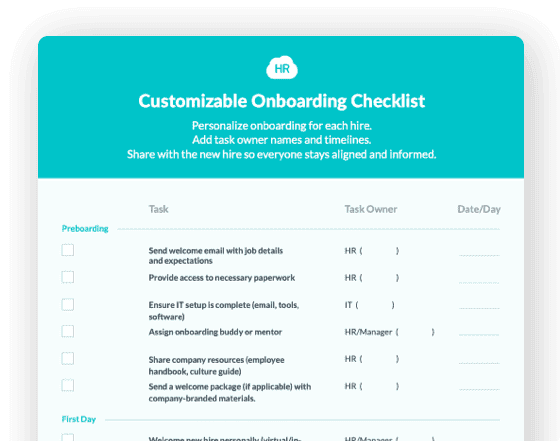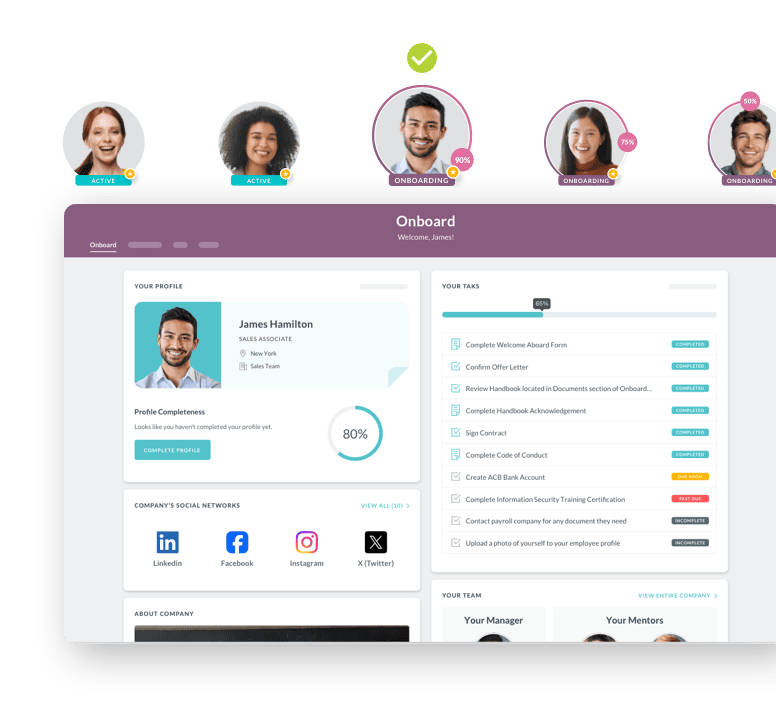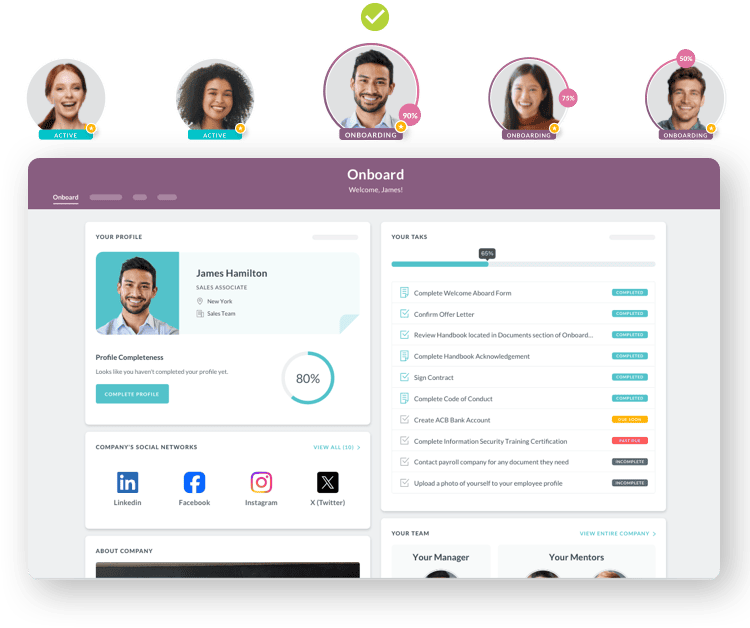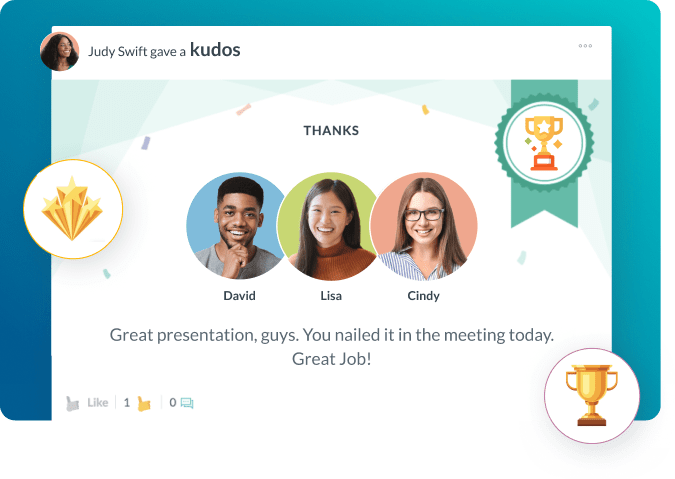HR Sourcing
- Key Elements That Define Effective HR Sourcing
- Comparing Sourcing Methods and Their Strategic Value
- Building a Sustainable HR Sourcing Practice
- Common Sourcing Mistakes That Limit Success
- How Different Industries Apply HR Sourcing Strategies
- Creating Your HR Sourcing Implementation Roadmap
- The Evolution of HR Sourcing in the AI Era

 Cut onboarding time
by 60%—here's the
Ultimate Checklist
that helped do it.
Cut onboarding time
by 60%—here's the
Ultimate Checklist
that helped do it.

HR Sourcing: Understanding the Foundation of Strategic Talent Acquisition
HR sourcing represents the proactive process of identifying, researching, and engaging qualified candidates for current or future job openings. Unlike reactive recruiting methods that simply review incoming applications, sourcing involves strategic outreach to build relationships with potential talent before positions become available. This approach transforms how organizations compete for skilled professionals in today's competitive labor market. According to the Society for Human Resource Management, effective sourcing creates a pipeline of qualified candidates ready when business needs arise.
Modern HR sourcing combines traditional networking with digital tools, data analytics, and relationship building. Talent acquisition teams use sourcing to discover passive candidates who aren't actively job hunting but might consider the right opportunity. This proactive stance allows companies to reduce time to hire, improve candidate quality, and maintain competitive advantage when critical positions open.
The sourcing function has evolved beyond simple database searches. Today's sourcers act as talent scouts, researchers, and relationship managers who understand business strategy, market trends, and candidate motivations. They create talent communities, nurture long term connections, and position their organizations as employers of choice before competitors even begin their search.
Key Elements That Define Effective HR Sourcing
Understanding HR sourcing requires recognizing the strategic elements that separate it from traditional recruiting activities. These components work together to create sustainable talent pipelines.
-
Sourcing focuses on identifying and attracting candidates before jobs are posted, while recruiting manages the relationship once candidates express interest in specific roles. This distinction allows specialized teams to focus on their core strengths.
-
The process involves extensive research using Boolean search techniques, professional networks, industry databases, and social platforms to find candidates with specific skill sets and experience levels that match organizational needs.
-
Sourcers build talent pools organized by function, skill, or future need rather than responding to individual requisitions. This strategic approach ensures ready access to qualified candidates when positions open.
-
Relationship building forms the foundation of effective sourcing. Professionals engage candidates through personalized messages, industry insights, and authentic conversations that create lasting connections beyond immediate job opportunities.
-
Modern sourcing tools and platforms enable automated candidate discovery, relationship management, and pipeline tracking. These technologies amplify human judgment rather than replace it.
-
Diversity sourcing strategies intentionally target underrepresented talent pools, expanding where organizations look for candidates and challenging traditional assumptions about qualified candidate sources.
Comparing Sourcing Methods and Their Strategic Value
|
Sourcing Method |
Primary Use Case |
Time Investment |
Candidate Quality |
Best For |
|
LinkedIn Outreach |
Professional networks, passive candidates |
Medium |
High |
Technology, professional services, management roles |
|
Boolean Search |
Database mining, specific skills |
Low to Medium |
Medium to High |
Technical positions, niche expertise |
|
Employee Referrals |
Known talent networks |
Low |
Very High |
All positions, culture fit priority |
|
Industry Events |
Specialized talent, relationship building |
High |
High |
Executive search, specialized fields |
|
Talent Communities |
Long term pipeline development |
High |
Medium to High |
Future hiring needs, employer branding |
|
Social Media |
Diverse talent pools, employer branding |
Medium |
Medium |
Entry to mid level, creative roles |
Building a Sustainable HR Sourcing Practice
Creating an effective sourcing function requires deliberate strategy and consistent execution. Organizations that invest in proper sourcing practices see measurable improvements in hiring speed and candidate quality.
Start by defining clear candidate personas for each critical role. Document the skills, experience, values, and motivations of ideal candidates. This clarity guides your search strategy and helps you recognize qualified prospects when you find them. Include hiring managers and department leaders in this process to ensure alignment between sourcing efforts and actual business needs.
Develop your employer brand before you need it. Candidates research companies long before they apply. Your organization's reputation, values, and employee experiences directly impact sourcing success. Share authentic stories, employee testimonials, and behind the scenes content that helps prospects envision themselves on your team.
Invest in sourcing technology that enhances human capabilities. Applicant tracking systems with sourcing features, relationship management tools, and analytics platforms provide structure and insights. However, technology should support relationship building rather than replace the human connection that attracts top talent.
Build talent pools organized by skills, functions, or strategic priorities. Maintain regular communication with these communities through newsletters, industry insights, and engagement opportunities. When positions open, you'll have warm relationships rather than cold outreach. This approach dramatically improves response rates and candidate interest.
Measure sourcing effectiveness through metrics like source quality, pipeline health, time to fill, and candidate experience scores. Track which sourcing channels produce the best long term employees. Use this data to refine your approach and allocate resources to the highest return activities.


Common Sourcing Mistakes That Limit Success
Even experienced talent acquisition teams make sourcing errors that reduce effectiveness. Recognizing these pitfalls helps organizations optimize their approach and avoid wasted effort.
Generic outreach messages destroy response rates. Candidates receive dozens of impersonal recruiting messages weekly. Messages that reference specific accomplishments, shared connections, or genuine interest in their career journey stand out. Personalization requires more time upfront but generates significantly better results. According to Harvard Business Review research, personalized recruitment approaches improve candidate engagement and quality.
Neglecting passive candidates limits your talent pool to actively job seeking professionals. The best candidates often work successfully in current roles but remain open to exceptional opportunities. Building relationships before you need them positions your organization favorably when candidates consider their next move. Passive talent sourcing requires patience and authentic relationship building.
Focusing exclusively on traditional talent pools perpetuates homogenous hiring. Diverse sourcing strategies require intentionally expanding where you look for talent. Consider alternative education paths, adjacent industries, returners to the workforce, and underrepresented communities. This approach not only supports diversity goals but discovers overlooked talent with valuable perspectives.
Treating sourcing as a transactional activity rather than relationship building undermines long term success. Candidates remember how organizations engage them even when timing isn't right. Maintaining respectful, helpful connections today builds goodwill that pays dividends when future opportunities arise. View every interaction as part of your employer brand.
Insufficient coordination between sourcers and recruiters creates disconnected candidate experiences. When sourcing operates separately from the recruiting function, candidates receive mixed messages and experience friction moving through the hiring process. Regular communication and shared goals ensure seamless transitions from initial contact through offer acceptance.
How Different Industries Apply HR Sourcing Strategies
HR sourcing adapts to unique industry challenges and talent market conditions. Understanding these applications helps you refine strategies for your specific context.
Healthcare organizations face persistent talent shortages for nurses, specialists, and allied health professionals. Their sourcing strategies emphasize location based targeting, licensure requirements, and shift flexibility messaging. Many build relationships with nursing schools, professional associations, and training programs to access emerging talent. They also use referral bonuses and maintain alumni networks from previous employees who left in good standing.
Technology companies compete intensely for software engineers, data scientists, and product managers. Their sourcing emphasizes technical communities like GitHub, Stack Overflow, and specialized forums where developers share work and build reputations. Tech sourcers often come from technical backgrounds themselves, enabling authentic conversations about architecture decisions, technology stacks, and engineering culture. They focus heavily on passive candidates already employed at other technology companies.
Manufacturing and logistics operations need frontline workers, skilled tradespeople, and operations managers across multiple locations. Their sourcing combines traditional job boards with community partnerships, trade schools, and military veteran networks. They emphasize stability, advancement opportunities, and comprehensive benefits in their messaging. LinkedIn sourcing tactics help these organizations reach specialized technical talent in their local markets.
Creating Your HR Sourcing Implementation Roadmap
Launching or improving your sourcing function requires systematic planning and execution. Follow this framework to build sustainable sourcing capabilities.
Phase 1: Foundation Building.
Assess your current sourcing maturity. Document existing processes, tools, and results. Interview stakeholders to understand pain points and priorities. Define clear success metrics tied to business outcomes. Secure leadership support and budget allocation. Establish whether sourcing will be a specialized role or distributed responsibility across your recruiting team.
Phase 2: Strategy Development.
Create detailed candidate personas for your top 10 most critical or difficult to fill roles. Research where these candidates spend time professionally, what motivates their career decisions, and how they prefer to be contacted. Map competitor sourcing strategies to identify opportunities and gaps. Develop your unique employer value proposition that differentiates your organization.
Phase 3: Tool Selection and Setup.
Evaluate sourcing technology options based on your strategy, budget, and technical capabilities. Implement your chosen platforms and train team members thoroughly. Build initial Boolean search strings for priority roles. Create message templates that maintain personalization while improving efficiency. Establish your talent pool structure and relationship management process.
Phase 4: Execution and Optimization.
Launch sourcing campaigns for priority positions. Track response rates, candidate quality, and source effectiveness. Gather feedback from candidates and hiring managers. Refine your approach based on data and qualitative insights. Build talent communities and maintain regular engagement. Document best practices and successful techniques to scale across your team.
Phase 5: Scaling and Integration.
Expand sourcing coverage to additional roles and departments. Develop specialized sourcing expertise for different talent segments. Strengthen coordination between sourcing and recruiting functions. Integrate sourcing metrics into broader talent acquisition reporting. Create career development paths for sourcing professionals. Continuously adapt to changing market conditions and organizational needs.
The Evolution of HR Sourcing in the AI Era
HR sourcing stands at a transformation point as artificial intelligence and automation reshape how organizations find and engage talent. Recruiting innovation continues accelerating, creating both opportunities and challenges for talent acquisition leaders.
AI powered sourcing tools now identify candidates based on skills and potential rather than job titles and keywords alone. Machine learning algorithms surface non obvious candidates who match role requirements despite unconventional backgrounds. These technologies help reduce bias while expanding talent pools. However, they require careful oversight to ensure algorithms don't perpetuate existing inequities or make decisions without human judgment.
Skills based hiring replaces degree requirements and traditional experience patterns. This shift requires sourcers to think differently about candidate qualifications and where to find talent. Organizations that embrace skills first approaches access larger, more diverse talent pools. They also improve retention by hiring for capability and potential rather than credentials alone.
Remote work permanently expanded geographic talent pools. Sourcers no longer constrain searches to commutable distances. This change intensifies competition while creating access to previously unreachable candidates. Organizations need compelling reasons beyond salary to attract remote talent from anywhere.
Candidate expectations continue rising. Professionals expect personalized, timely communication and transparent processes. They research organizations thoroughly before engaging. Employer brand, employee reviews, and social proof heavily influence their interest. Sourcing success increasingly depends on authentic organizational culture and employee experience.
The future belongs to organizations that combine human relationship building with intelligent technology. Sourcers who leverage AI for candidate identification while maintaining genuine personal connections will thrive. Those who build diverse talent pipelines, adapt to evolving candidate expectations, and align sourcing with strategic business needs will drive competitive advantage through superior talent acquisition.
 Discover how our HR solutions streamline onboarding, boost employee engagement, and simplify HR management
Discover how our HR solutions streamline onboarding, boost employee engagement, and simplify HR management
Keep Reading
Specialized Onboarding Software for Healthcare to Reduce Admin Work and Scale Hiring Fast
Imagine this: a women’s health clinic hires two new nurses, only to lose both within
A Closer Look at HR Cloud-ADP Integrations
ADP is the gold standard for payroll and core HR management. But if you’ve ever tried to
Retention Reset: How to Keep Your Best Talent in 2025
More employees are walking away from their jobs in 2025 not just for better pay, but for
Ready to streamline your onboarding process?
Book a demo today and see how HR Cloud can help you create an exceptional experience for your new employees.







